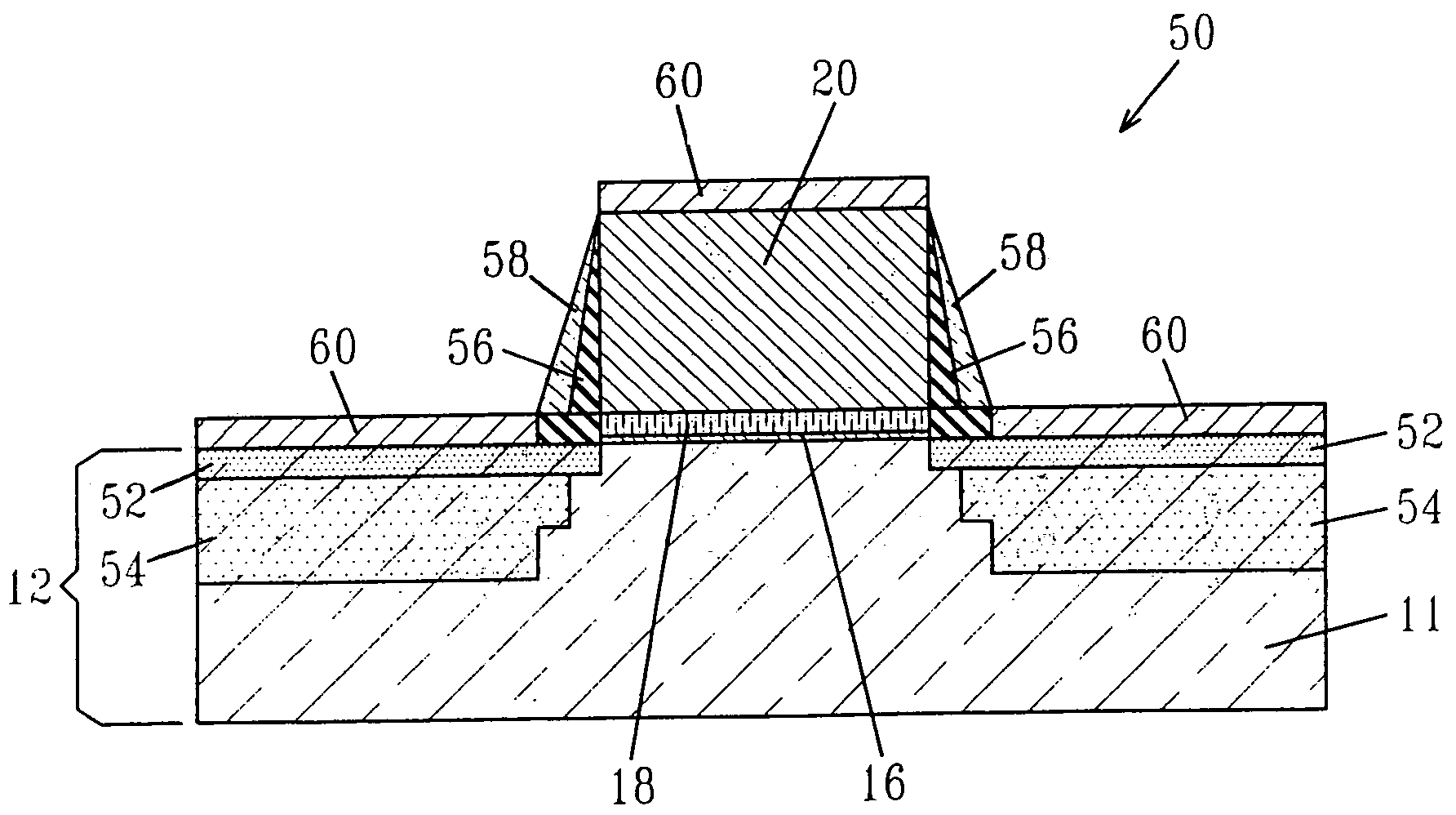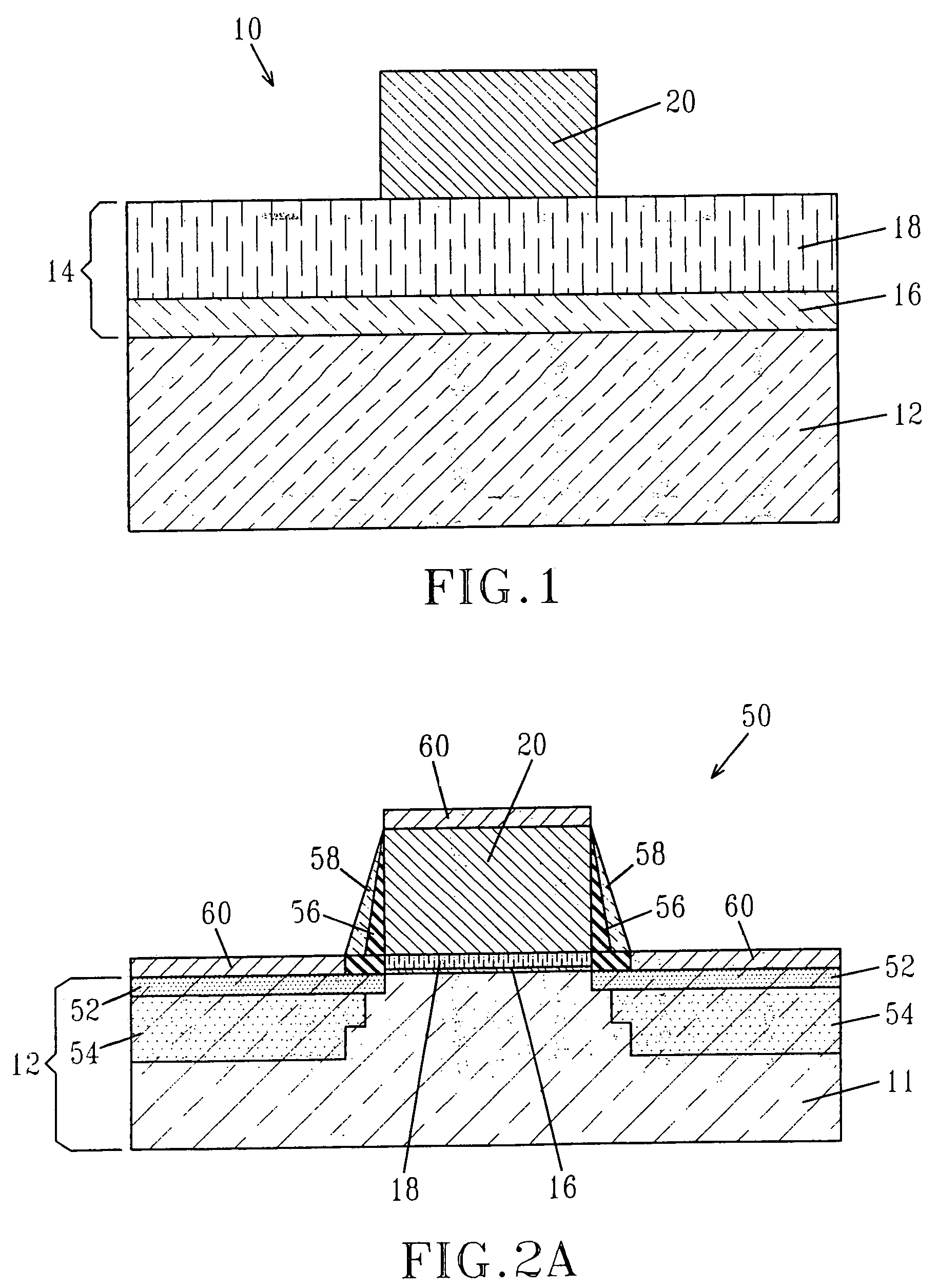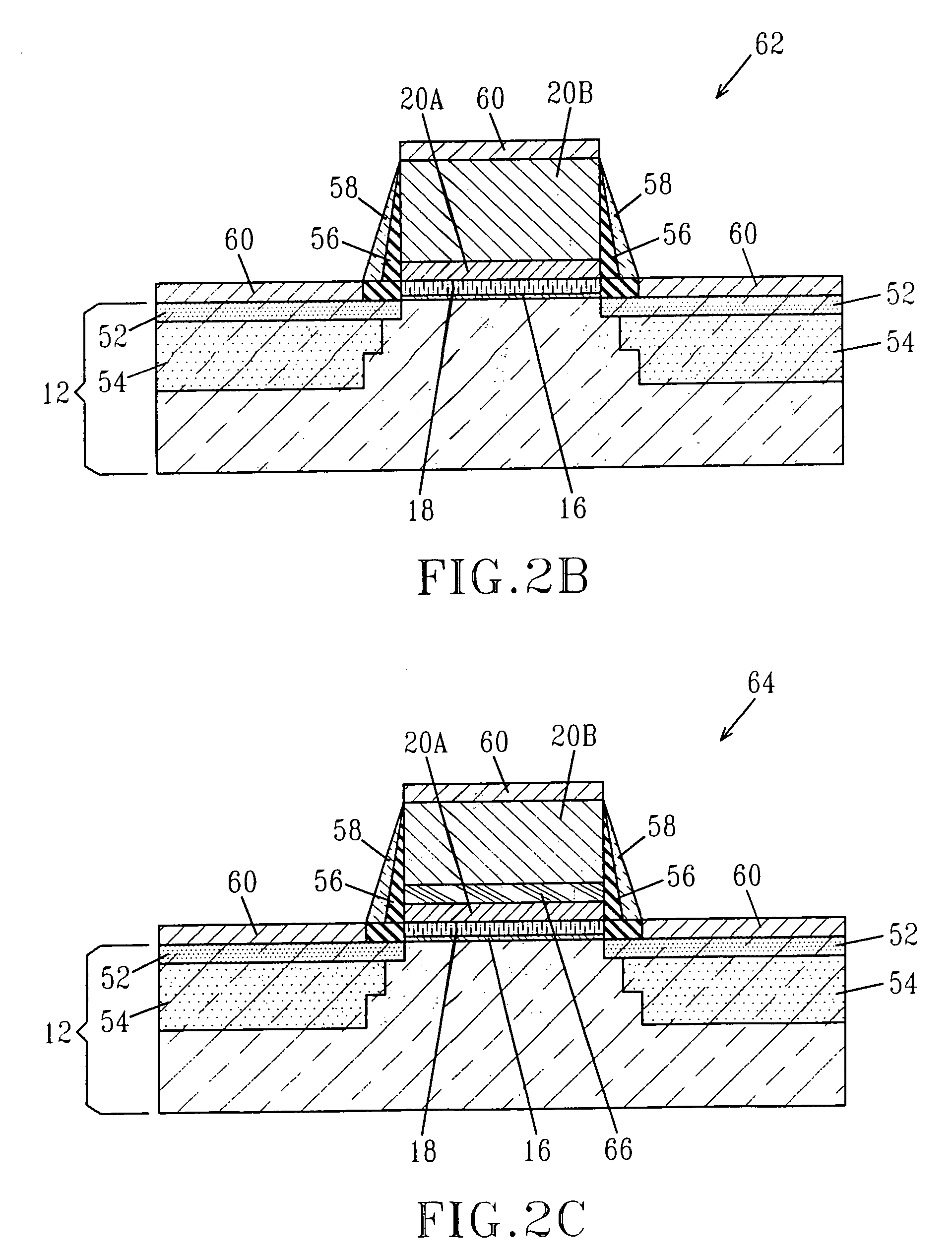Method of forming metal/high-k gate stacks with high mobility
a technology of high-k gate stack and high-movement metal, which is applied in the direction of semiconductor devices, electrical apparatus, transistors, etc., can solve the problems of increasing densities of electronic circuits, increasing the size of devices therein, and worrying about long-term dielectric reliability
- Summary
- Abstract
- Description
- Claims
- Application Information
AI Technical Summary
Benefits of technology
Problems solved by technology
Method used
Image
Examples
example 1
[0061]This example is provided to show that the degradation in electronic mobilites within a metal-high-k gate stack can be reduced significantly when the gate stack is annealed at high temperature and an interfacial layer with a higher dielectric constant than SiO2 is formed. W / HfO2 gate stacks were formed by metal organic chemical vapor deposition (MOCVD) on thin SiO2 interfacial layers on bulk Si substrates. NMOS were fabricated by using a non-self-aligned gate process, as described by Callegari, et al., SSDM, Tokyo, Japan 2003, pp. 809–809. The gate stacks were then characterized by mobility measurements using 20×5 mm2FETs with channel doping of about 4×1017 B / cm3. Inversion charge was derived by a split CV method and drain currents were measured at Vds=30 mV.
[0062]FIG. 3 shows a set of mobility curves for a W / HfO2 gate stack as a function of increasing annealing temperature. At low annealing temperatures (less than 800° C.), mobilities were severely degraded. Electron peak mobi...
example 2
[0066]In example, a doped silicon substrate was prepared as usual for semiconductor processing. The substrate was cleaned and a thin oxide layer was grown in a liquid chemical bath containing a mixture of water, hydrogen peroxide and ammonium hydroxide which was controlled to a temperature between 20°–40° C., preferably 35° C. Subsequently, and preferably immediately, the substrate was placed into a vacuum chamber and heated to a temperature of 250°–650° C., preferably 500° C. A Hf containing metal organic precursor was delivered into the chamber and to the substrate through a showerhead. The chamber ambient may contain one or more of the following gasses: nitrogen, helium, oxygen, argon or other inert gasses preferably N2 and oxygen. The total gas pressure in the reactor was controlled to between 50 mT and 5 T, preferably 300 mT. In this fashion, a thin film consisting of hafnium oxide is grown on the substrate to between 5 and 200 Å thick (preferably 25 Å) depending on amount of t...
PUM
 Login to View More
Login to View More Abstract
Description
Claims
Application Information
 Login to View More
Login to View More - R&D
- Intellectual Property
- Life Sciences
- Materials
- Tech Scout
- Unparalleled Data Quality
- Higher Quality Content
- 60% Fewer Hallucinations
Browse by: Latest US Patents, China's latest patents, Technical Efficacy Thesaurus, Application Domain, Technology Topic, Popular Technical Reports.
© 2025 PatSnap. All rights reserved.Legal|Privacy policy|Modern Slavery Act Transparency Statement|Sitemap|About US| Contact US: help@patsnap.com



